-
Executive Summary
-
Scope of the Report
-
Market Definition
-
Scope of the Study
- Research Objectives
- Assumptions & Limitations
-
Market Structure
-
Market Research Methodology
-
Research Process
-
Secondary Research
-
Primary Research
-
Forecast Model
-
Market Landscape
-
Supply Chain Analysis
- Raw Material Suppliers
- Manufacturers/Producers
- Distributors/Retailers/Wholesalers/E-Commerce
- End Users
-
Porter’s Five Forces Analysis
- Threat of New Entrants
- Bargaining Power of Buyers
- Bargaining Power of Suppliers
- Threat of Substitutes
- Internal Rivalry
-
Market Dynamics of the Global Feed Yeast Market
-
Introduction
-
Drivers
-
Restraints
-
Opportunities
-
Challenges
-
Global Feed Yeast Market, by Type
-
Introduction
-
Live Yeast
- Market Estimates & Forecast, 2024–2032
- Market Estimates & Forecast, by Region, 2024–2032
-
Spent Yeast
- Market Estimates & Forecast, 2024–2032
- Market Estimates & Forecast, by Region, 2024–2032
-
Yeast Derivatives
- Market Estimates & Forecast, 2024–2032
- Market Estimates & Forecast, by Region, 2024–2032
-
Others
- Market Estimates & Forecast, 2024–2032
- Market Estimates & Forecast, by Region, 2024–2032
-
Global Feed Yeast Market, by Form
-
Introduction
-
Powder
- Market Estimates & Forecast, 2024–2032
- Market Estimates & Forecast, by Region, 2024–2032
-
Liquids
- Market Estimates & Forecast, 2024–2032
- Market Estimates & Forecast, by Region, 2024–2032
-
Others
- Market Estimates & Forecast, 2024–2032
- Market Estimates & Forecast, by Region, 2024–2032
-
Global Feed Yeast Market, by Livestock
-
Introduction
-
Ruminants
- Market Estimates & Forecast, 2024–2032
- Market Estimates & Forecast, by Region, 2024–2032
-
Poultry
- Market Estimates & Forecast, 2024–2032
- Market Estimates & Forecast, by Region, 2024–2032
-
Swine
- Market Estimates & Forecast, 2024–2032
- Market Estimates & Forecast, by Region, 2024–2032
-
Others
- Market Estimates & Forecast, 2024–2032
- Market Estimates & Forecast, by Region, 2024–2032
-
Global Feed Yeast Market, by Region
-
Introduction
-
North America
- Market Estimates & Forecast, 2024–2032
- Market Estimates & Forecast, by Form, 2024–2032
- Market Estimates & Forecast, by Livestock, 2024–2032
- Market Estimates & Forecast, by Type, 2024–2032
- Market Estimates & Forecast, by Stage of Application, 2024–2032
- US
- Canada
- Mexico
-
Europe
- Market Estimates & Forecast, 2024–2032
- Market Estimates & Forecast, by Form, 2024–2032
- Market Estimates & Forecast, by Livestock, 2024–2032
- Market Estimates & Forecast, by Type, 2024–2032
- Market Estimates & Forecast, by Stage of Application, 2024–2032
- Germany
- France
- Italy
- Spain
- UK
- Rest of Europe
-
Asia-Pacific
- Market Estimates & Forecast, 2024–2032
- Market Estimates & Forecast, by Form, 2024–2032
- Market Estimates & Forecast, by Livestock, 2024–2032
- Market Estimates & Forecast, by Type, 2024–2032
- Market Estimates & Forecast, by Stage of Application, 2024–2032
- China
- India
- Japan
- Australia & New Zealand
- Rest of Asia-Pacific
-
Rest of the World (RoW)
- Market Estimates & Forecast, 2024–2032
- Market Estimates & Forecast, by Form, 2024–2032
- Market Estimates & Forecast, by Livestock, 2024–2032
- Market Estimates & Forecast, by Type, 2024–2032
- Market Estimates & Forecast, by Stage of Application, 2024–2032
- South America
- Middle East
- Africa
-
Company Landscape
-
Introduction
-
Market Strategy
-
Key Development Analysis
-
(Expansions/ Mergers and Acquisitions/ Joint Ventures/ New Product Developments/ Agreements/ Investments)
-
Company Profiles
-
Alltech, Inc.
- Company Overview
- Financial Updates
- Product/Business Segment Overview
- Strategy
- Key Developments
- SWOT Analysis
-
Archer-Daniels-Midland Company
- Company Overview
- Financial Updates
- Product/Business Segment Overview
- Strategy
- Key Developments
- SWOT Analysis
-
Kothari Fermentation and Biochem Ltd.
- Company Overview
- Financial Updates
- Product/Business Segment Overview
- Strategy
- Key Developments
- SWOT Analysis
-
Cargill Inc.
- Company Overview
- Financial Updates
- Product/Business Segment Overview
- Strategy
- Key Developments
- SWOT Analysis
-
Oriental Yeast India Pvt. Ltd.
- Company Overview
- Financial Updates
- Product/Business Segment Overview
- Strategy
- Key Developments
- SWOT Analysis
-
Angel Yeast Company
- Company Overview
- Financial Updates
- Product/Business Segment Overview
- Strategy
- Key Developments
- SWOT Analysis
-
Chr. Hansen A/S
- Company Overview
- Financial Updates
- Product/Business Segment Overview
- Strategy
- Key Developments
- SWOT Analysis
-
Lesaffre Yeast Corporation
- Company Overview
- Financial Updates
- Product/Business Segment Overview
- Strategy
- Key Developments
- SWOT Analysis
-
Associated British Foods PLC
- Company Overview
- Financial Updates
- Product/Business Segment Overview
- Strategy
- Key Developments
- SWOT Analysis
-
LALLEMAND Inc.
- Company Overview
- Financial Updates
- Product/Business Segment Overview
- Strategy
- Key Developments
- SWOT Analysis
-
Novus Interantional Inc.
- Company Overview
- Financial Updates
- Product/Business Segment Overview
- Strategy
- Key Developments
- SWOT Analysis
-
Biomin Gmbh
- Company Overview
- Financial Updates
- Product/Business Segment Overview
- Strategy
- Key Developments
- SWOT Analysis
-
Leiber GmbH
- Company Overview
- Financial Updates
- Product/Business Segment Overview
- Strategy
- Key Developments
- SWOT Analysis
-
Diamond V Mills Incorporated
- Company Overview
- Financial Updates
- Product/Business Segment Overview
- Strategy
- Key Developments
- SWOT Analysis
-
Nutreco N.V.
- Company Overview
- Financial Updates
- Product/Business Segment Overview
- Strategy
- Key Developments
- SWOT Analysis
-
Conclusion
-
LIST OF TABLES
-
Global Feed Yeast Market, by Region, 2024–2032 (USD Million)
-
Global Feed Yeast Market, by Type, 2024–2032 (USD Million)
-
Global Feed Yeast Market, by Form, 2024–2032 (USD Million)
-
Global Feed Yeast Market, by Livestock, 2024–2032 (USD Million)
-
North America: Feed Yeast Market, by Country, 2024–2032 (USD Million)
-
North America: Feed Yeast Market, by Type, 2024–2032 (USD Million)
-
North America: Feed Yeast Market, by Form, 2024–2032 (USD Million)
-
North America: Feed Yeast Market, by Livestock, 2024–2032 (USD Million)
-
US: Feed Yeast Market, by Type, 2024–2032 (USD Million)
-
US: Feed Yeast Market, by Form, 2024–2032 (USD Million)
-
US: Feed Yeast Market, by Livestock, 2024–2032 (USD Million)
-
Canada: Feed Yeast Market, by Type, 2024–2032 (USD Million)
-
Canada: Feed Yeast Market, by Form, 2024–2032 (USD Million)
-
Canada: Feed Yeast Market, by Livestock, 2024–2032 (USD Million)
-
Mexico: Feed Yeast Market, by Type, 2024–2032 (USD Million)
-
Mexico: Feed Yeast Market, by Form, 2024–2032 (USD Million)
-
Mexico: Feed Yeast Market, by Livestock, 2024–2032 (USD Million)
-
Europe: Feed Yeast Market, by Country, 2024–2032 (USD Million)
-
Europe: Feed Yeast Market, by Type, 2024–2032 (USD Million)
-
Europe: Feed Yeast Market, by Form, 2024–2032 (USD Million)
-
Europe: Feed Yeast Market, by Livestock, 2024–2032 (USD Million)
-
Germany: Feed Yeast Market, by Type, 2024–2032 (USD Million)
-
Germany: Feed Yeast Market, by Form, 2024–2032 (USD Million)
-
Germany: Feed Yeast Market, by Livestock, 2024–2032 (USD Million)
-
France: Feed Yeast Market, by Type, 2024–2032 (USD Million)
-
France: Feed Yeast Market, by Form, 2024–2032 (USD Million)
-
France: Feed Yeast Market, by Livestock, 2024–2032 (USD Million)
-
Italy: Feed Yeast Market, by Type, 2024–2032 (USD Million)
-
Italy: Feed Yeast Market, by Form, 2024–2032 (USD Million)
-
Italy: Feed Yeast Market, by Livestock, 2024–2032 (USD Million)
-
Spain: Feed Yeast Market, by Type, 2024–2032 (USD Million)
-
Spain: Feed Yeast Market, by Form, 2024–2032 (USD Million)
-
Spain: Feed Yeast Market, by Livestock, 2024–2032 (USD Million)
-
UK: Feed Yeast Market, by Type, 2024–2032 (USD Million)
-
UK: Feed Yeast Market, by Form, 2024–2032 (USD Million)
-
UK: Feed Yeast Market, by Livestock, 2024–2032 (USD Million)
-
Rest of Europe: Feed Yeast Market, by Type, 2024–2032 (USD Million)
-
Rest of Europe: Feed Yeast Market, by Form, 2024–2032 (USD Million)
-
Rest of Europe: Feed Yeast Market, by Livestock, 2024–2032 (USD Million)
-
Asia-Pacific: Feed Yeast Market, by Country, 2024–2032 (USD Million)
-
Asia-Pacific: Feed Yeast Market, by Type, 2024–2032 (USD Million)
-
Asia-Pacific: Feed Yeast Market, by Form, 2024–2032 (USD Million)
-
Asia-Pacific: Feed Yeast Market, by Livestock, 2024–2032 (USD Million)
-
China: Feed Yeast Market, by Type, 2024–2032 (USD Million)
-
China: Feed Yeast Market, by Form, 2024–2032 (USD Million)
-
China: Feed Yeast Market, by Livestock, 2024–2032 (USD Million)
-
India: Feed Yeast Market, by Type, 2024–2032 (USD Million)
-
India: Feed Yeast Market, by Form, 2024–2032 (USD Million)
-
India: Feed Yeast Market, by Livestock, 2024–2032 (USD Million)
-
Japan: Feed Yeast Market, by Type, 2024–2032 (USD Million)
-
Japan: Feed Yeast Market, by Form, 2024–2032 (USD Million)
-
Japan: Feed Yeast Market, by Livestock, 2024–2032 (USD Million)
-
Rest of Asia-Pacific: Feed Yeast Market, by Type, 2024–2032 (USD Million)
-
Rest of Asia-Pacific: Feed Yeast Market, by Form, 2024–2032 (USD Million)
-
Rest of Asia-Pacific: Feed Yeast Market, by Livestock, 2024–2032 (USD Million)
-
Rest of the World (RoW): Feed Yeast Market, by Country, 2024–2032 (USD Million)
-
Rest of the World (RoW): Feed Yeast Market, by Type, 2024–2032 (USD Million)
-
Rest of the World (RoW): Feed Yeast Market, by Form, 2024–2032 (USD Million)
-
Rest of the World (RoW): Feed Yeast Market, by Livestock, 2024–2032 (USD Million)
-
South America: Feed Yeast Market, by Type, 2024–2032 (USD Million)
-
South America: Feed Yeast Market, by Form, 2024–2032 (USD Million)
-
South America: Feed Yeast Market, by Livestock, 2024–2032 (USD Million)
-
Middle East: Feed Yeast Market, by Type, 2024–2032 (USD Million)
-
Middle East: Feed Yeast Market, by Form, 2024–2032 (USD Million)
-
Middle East: Feed Yeast Market, by Livestock, 2024–2032 (USD Million)
-
Africa: Feed Yeast Market, by Type, 2024–2032 (USD Million)
-
Africa: Feed Yeast Market, by Form, 2024–2032 (USD Million)
-
Africa: Feed Yeast Market, by Livestock, 2024–2032 (USD Million)
-
LIST OF FIGURES
-
Global Feed Yeast Market Segmentation
-
Forecast Research Methodology
-
Five Forces Analysis of the Global Feed Yeast Market
-
Value Chain of Global Feed Yeast Market
-
Share of the Global Feed Yeast Market in 2024, by Country (%)
-
Global Feed Yeast Market, by Region, 2024–2032
-
Global Feed Yeast Market Size, by Type, 2024
-
Share of the Global Feed Yeast Market, by Type, 2024–2032 (%)
-
Global Feed Yeast Market Size, by Form, 2024
-
Share of the Global Feed Yeast Market, by Form, 2024–2032 (%)
-
Global Feed Yeast Market Size, by Livestock, 2024
-
Share of the Global Feed Yeast Market, by Livestock, 2024–2032 (%)'
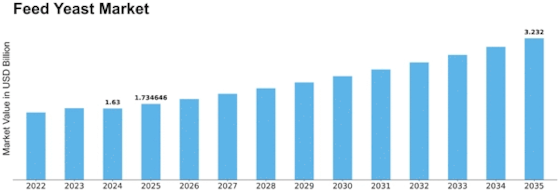

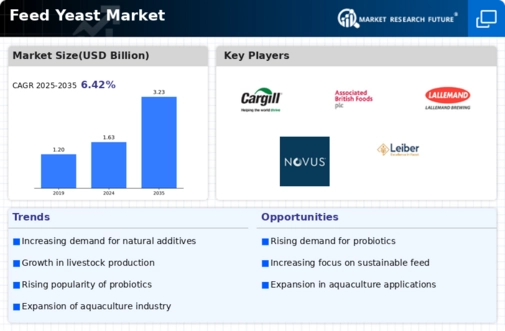
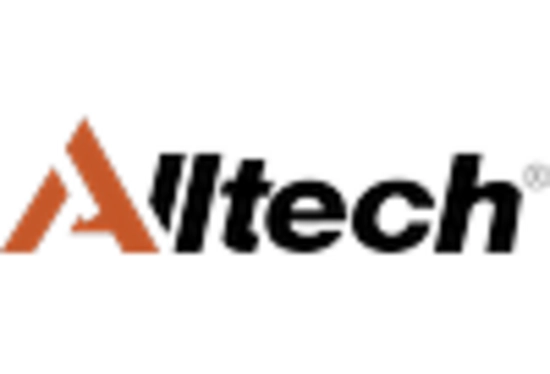
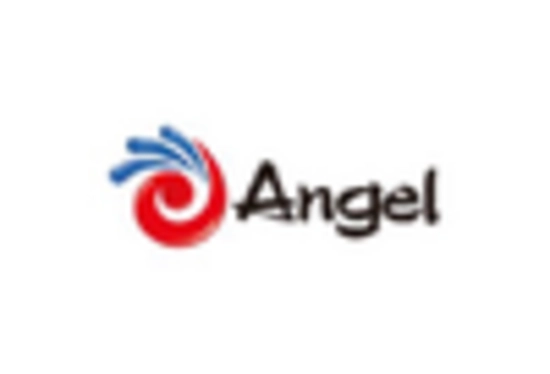


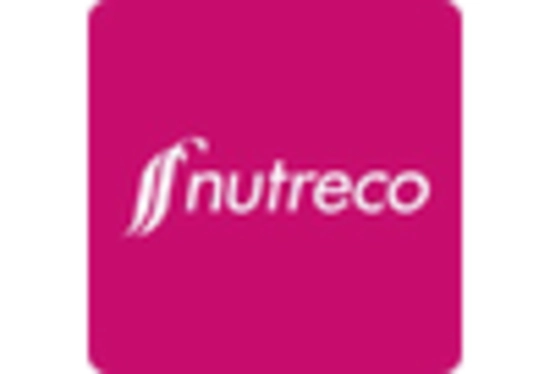
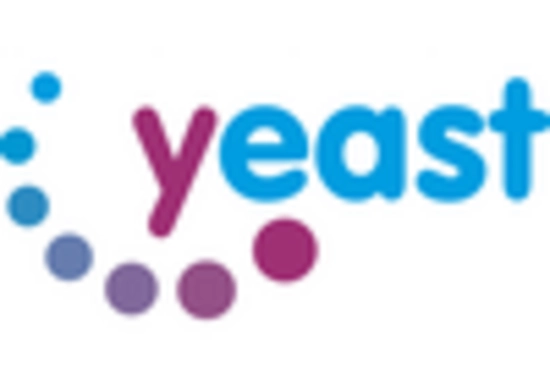

Leave a Comment